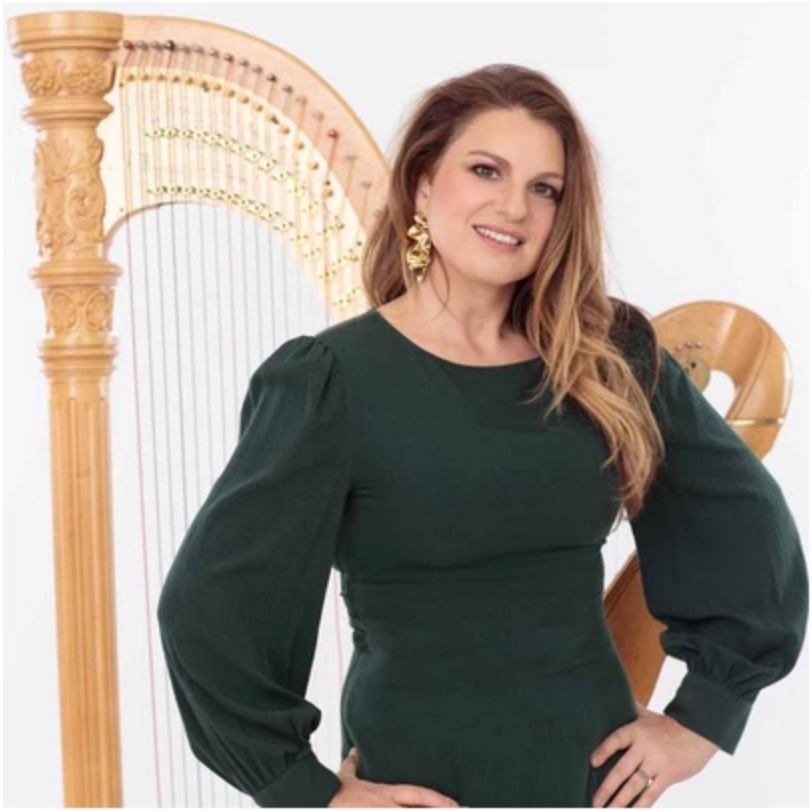by Peter Feher

The theme behind this year’s programming, “Sacred and Profane,” was front and center for the first concert. So was the overriding idea that guides ChamberFest every season: bringing together great musicians and great music. Wonderfully, these aims aligned on Wednesday in an arresting performance of Claude Debussy’s Danse sacrée et danse profane featuring harpist Bridget Kibbey. It was the shortest work of the evening, but also the standout.
In exploring the fundamental dichotomy between heaven and earth, eternity and reality, the spirit and the body, Debussy was simply trying to demonstrate everything that a modern harp could do. He had been commissioned by a French manufacturer to write a showpiece for the company’s new instrument, yet the resulting work wasn’t strictly contemporary when it premiered in Paris in 1904.
Rather, the “sacred” first half of the composition returns the harp to an approximation of its ancient role, the player gently rolling simple chords throughout a mystical section that doesn’t sound especially dance-like. It’s not until the piece’s second half that the shape of a dance — a waltz, to be exact — starts to emerge (it’s telling that this is the section Debussy dubbed “profane”).
Kibbey brought precision and personality to the performance. She’s an extremely extroverted player — her facial expressions, for example, registering every interesting harmonic shift in the first half of Debussy’s score. Yet her musical intentions are just as clear.
You could pick out every note up and down the harp in passages where lesser hands would have produced only a wash of sound. Hearing the piece backed not by an orchestra but by a quartet — violinists Alexi Kenney and Joseph Lin, violist Paul Neubauer, and cellist Annie Jacobs-Perkins — helped as well.
The strings were at a slight disadvantage after intermission, when they began Felix Mendelssohn’s Quintet in B-flat, Op. 87. The first two movements of this work are fine if functional chamber writing, giving at least the lead players the opportunity to shine. First violist Milena Pajaro-van de Stadt projected a particularly lovely and robust tone among the trio of principals that also included Lin on first violin and Oliver Herbert on cello.
Transcendence comes in Mendelssohn’s third movement, Adagio e lento, which makes fantastic use of the quintet in all its possible configurations. Second violinist Diana Cohen and second violist Neubauer were stronger presences here and continuing into the upbeat finale.
The evening opened with the cheerful pronouncements of Mozart’s Sonata in D for Two Pianos, K. 448. Seated at two Steinway grands arranged opposite one another, Roman Rabinovich and Adam Golka settled into a performance that was by turns optimistic, humorous, heartfelt, and braggadocious.
Between the cast of characters and the somewhat elaborate stage setup, there were almost the makings of an opera, with this as the overture, right before the curtain rises.
Published on ClevelandClassical.com June 20, 2024
Click here for a printable copy of this article



